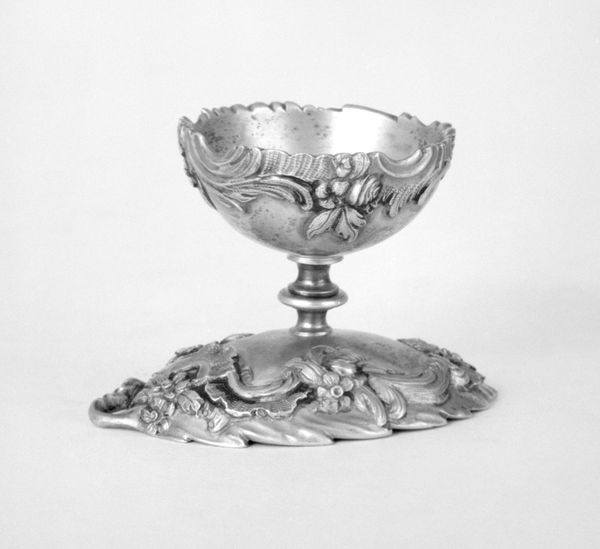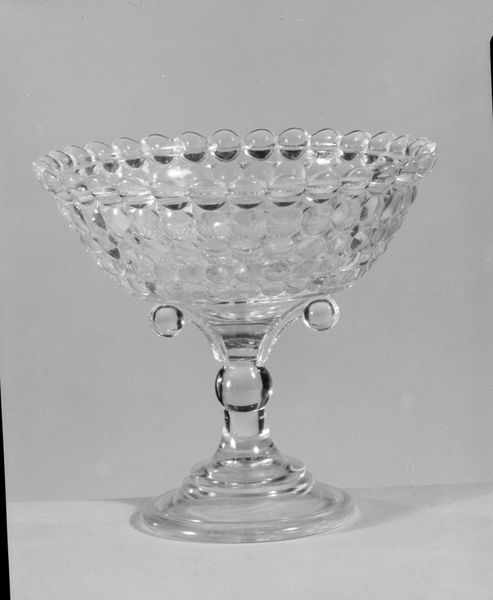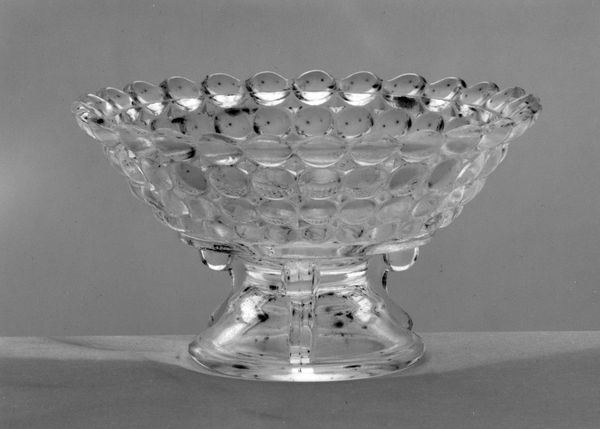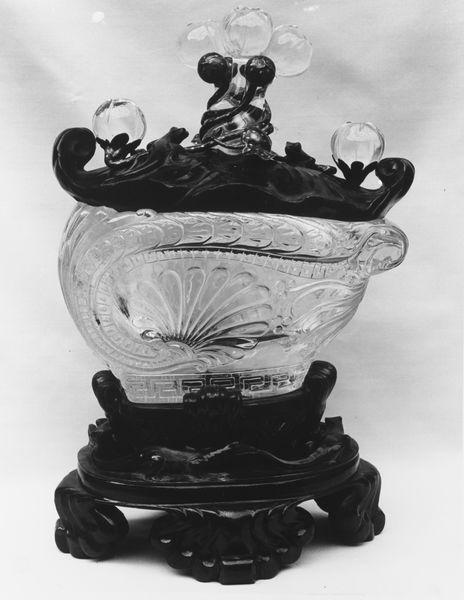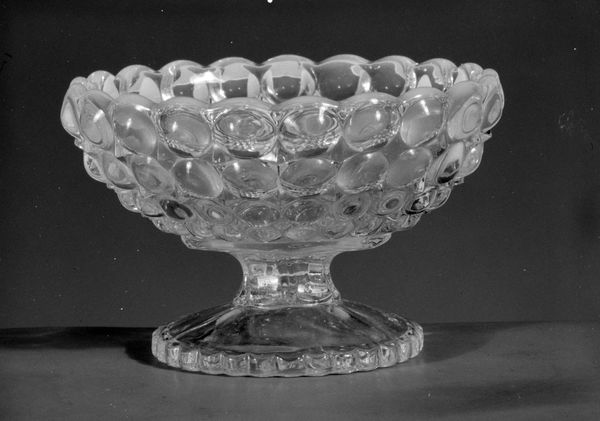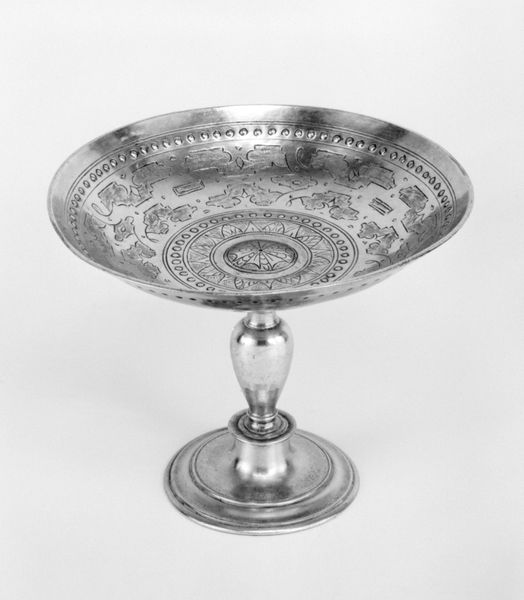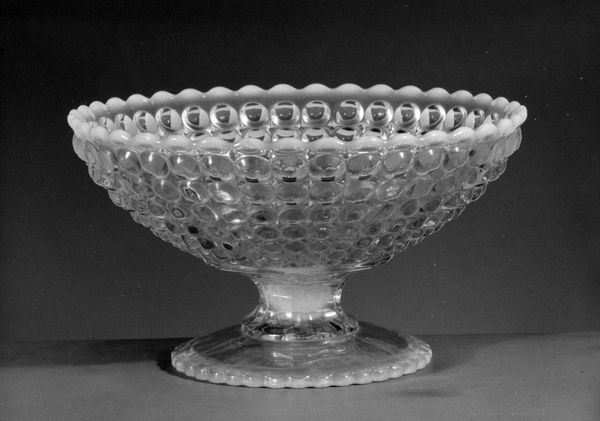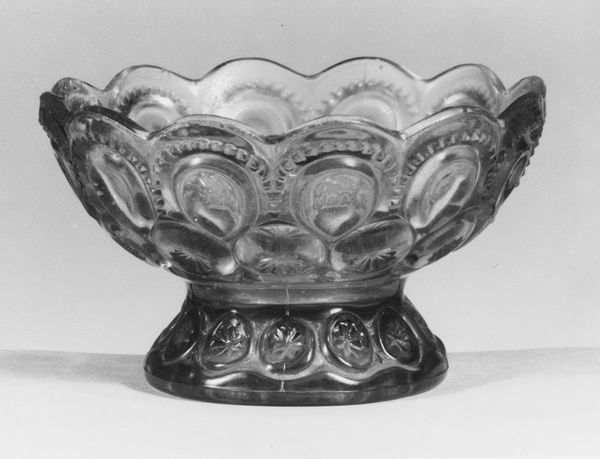
glass, sculpture
#
glass
#
sculpture
#
decorative-art
Dimensions: 8 7/8 × 9 7/8 × 6 7/8 in. (22.5 × 25.1 × 17.5 cm)
Copyright: Public Domain
This compote was made by the Bryce Brothers, and is an example of pressed glass. Rather than being mouth-blown and hand-tooled, this kind of object was shaped in a mold. The popularity of pressed glass surged in the mid-19th century because it allowed for mass production, making decorative items accessible to a wider audience. The Bryce Brothers, like many glassmakers of the time, capitalized on this technology. Molten glass would have been poured or pressed into a mold, giving it the desired shape and texture, including the elaborate basket weave pattern and the fanciful dolphin support. The appeal of this compote lies in its ability to mimic the appearance of more expensive, hand-crafted glassware. It reflects a shift in consumer culture, where the availability and affordability of goods became increasingly important, and illustrates the democratization of design through industrial processes. By embracing these techniques, the Bryce Brothers blurred the lines between art and industry, challenging traditional notions of craftsmanship and artistry.
Comments
No comments
Be the first to comment and join the conversation on the ultimate creative platform.
